Pro Tips For Your Magento TTFB Optimization in 2025
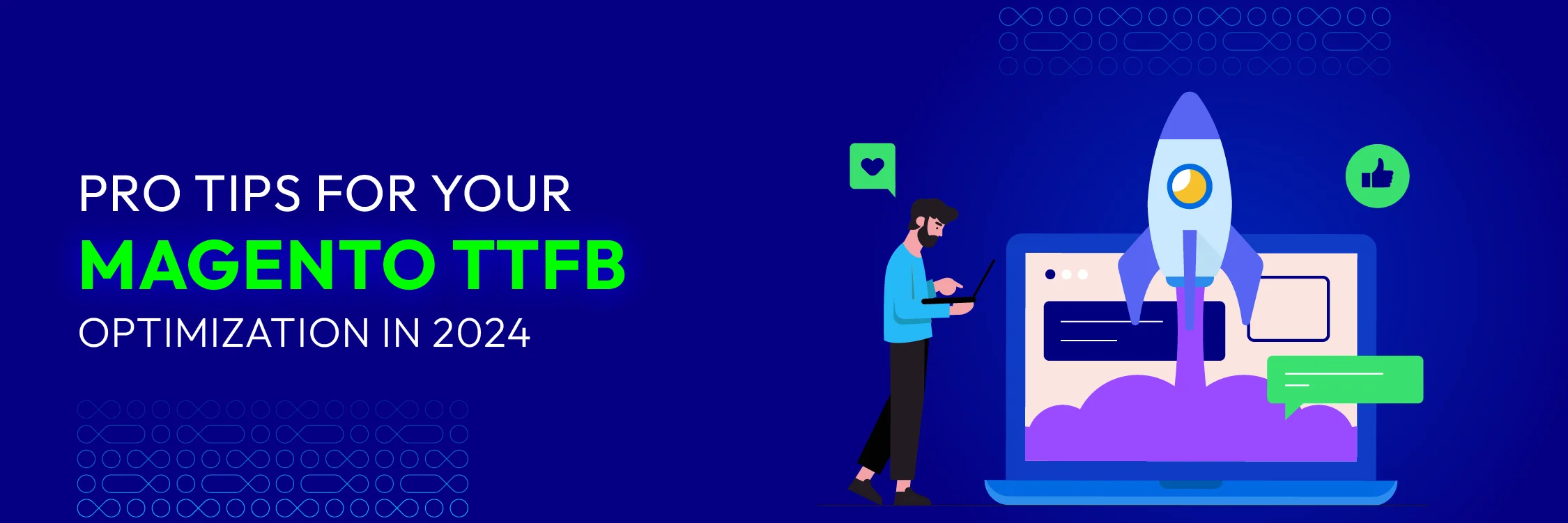
Slow loading times on your Magento 2 website can severely affect user experience and overall performance. One crucial factor to address for better website speed is TTFB (Time to First Byte). TTFB measures the time between a user’s request and the first byte of the server’s response. For instance, when someone requests your Magento 2 store’s homepage, the server processes this request and returns the initial byte of data, ideally within a short duration, such as 200 milliseconds.
Various factors can contribute to slow server response times, impacting your Magento 2 store’s TTFB. In this guide, we’ll explore the elements that influence TTFB and provide you with the most expert tips to reduce TTFB and optimize your store’s performance for 2025. Application of these strategies will enhance your website’s speed, resulting in a better user experience and potentially higher search engine rankings.
Overview of TTFB
When someone visits a website, a flurry of activities like database queries, API calls, and PHP operations occur instantly. Essentially, TTFB (Time to First Byte) comprises three main tasks:
-
Sending a request to the server
-
Processing the request
-
Generating and fetching the response to the client
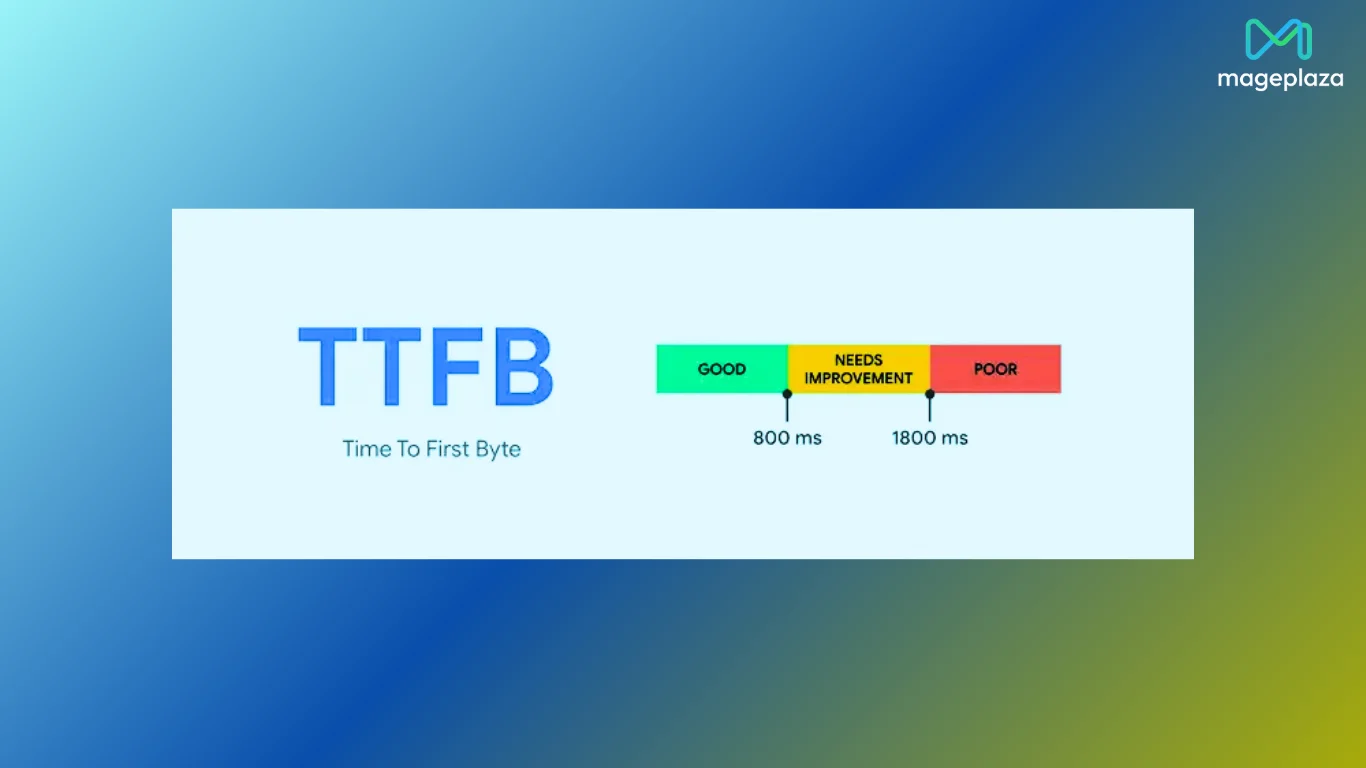
As soon as the user receives the first byte of content, the “stopwatch” stops. A good TTFB is really important for a smooth user experience. Google once recommended aiming for a TTFB of 200 milliseconds or less, but as of January 2025, a response time under 800 milliseconds is considered acceptable and will pass PageSpeed Insights audits.
Anything above this is flagged as an opportunity for improvement, as it can significantly affect conversions. Extreme cases, like a TTFB of 21 seconds due to server misconfigurations, are rare but damaging. Thus, it’s vital to identify and fix issues to ensure fast loading times and a positive user experience.
TTFB and Core Web Vitals: Everything You Need To Know
TTFB and Core Web Vitals play critical roles in optimizing your Magento store’s performance. When assessing your site using tools like Google PageSpeed Insights, it’s crucial to focus on reducing server response times. This directly impacts metrics such as First Contentful Paint (FCP) and Largest Contentful Paint (LCP), which are key indicators for user experience (UX) according to Google’s standards.
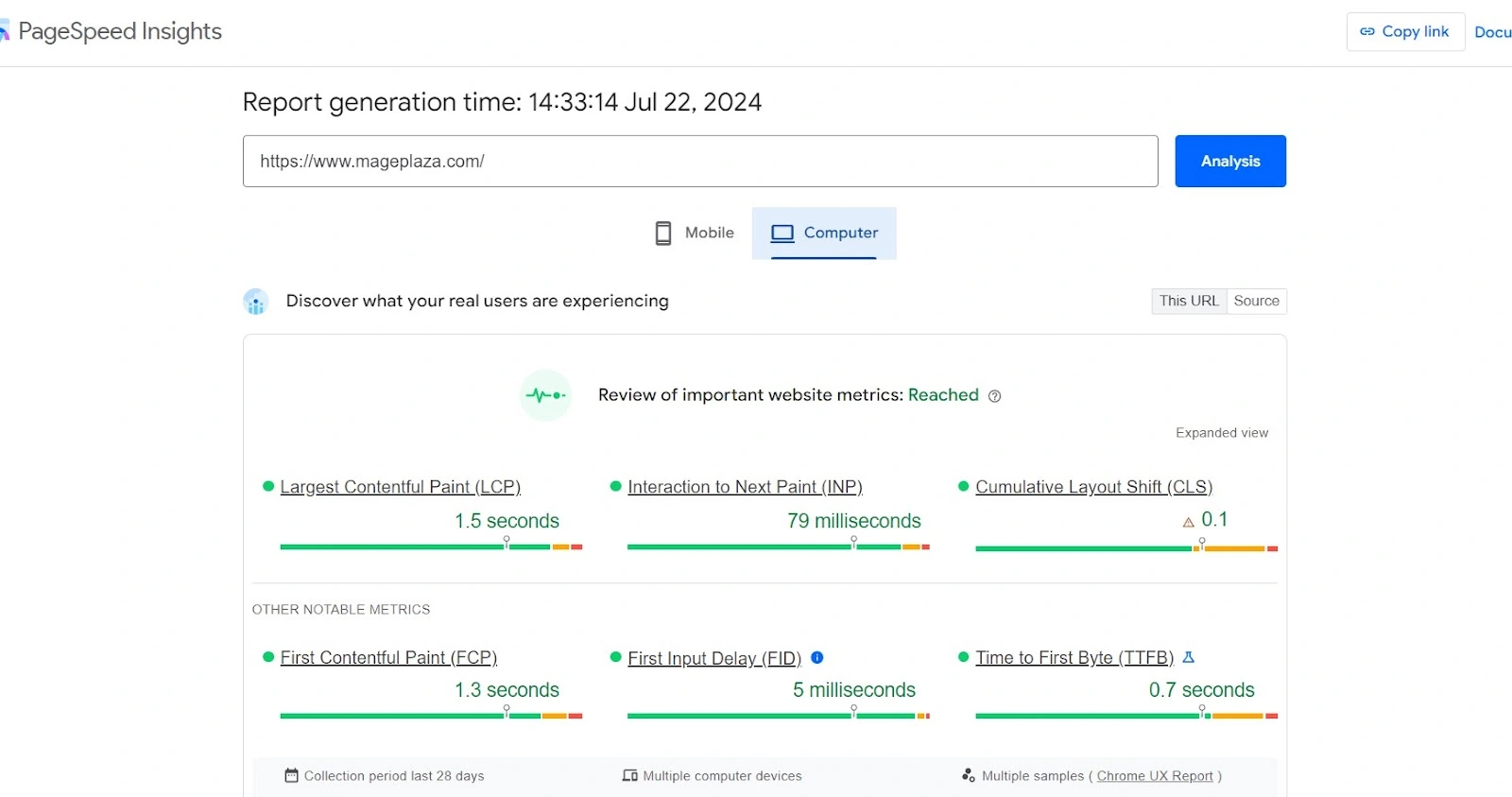
FCP measures how quickly users see the first visual elements on your page, like logos or text, after they begin loading it. On the other hand, LCP measures the time it takes for the largest above-the-fold content, whether it’s an image, text block, or video, to become fully visible. These metrics are part of the Core Web Vitals, which are pivotal for ensuring your site loads fast and provides a smooth browsing experience.
Optimizing Magento’s Core Web Vitals involves addressing server responsiveness, as delays in TTFB can directly impact how well your site performs on these vital metrics. Improving TTFB helps enhance overall loading speed and user satisfaction, making it essential to prioritize your optimization efforts.
How to Measure TTFB: Essential Metrics and Methods
When evaluating Time To First Byte (TTFB) for your Magento website in 2025, there are several effective methods to measure it accurately:
-
Lab Tools (Simulated Environment): Tools like Gtmetrix and WebPageTest create ideal testing conditions, allowing for baseline performance checks.
-
Real User Monitoring (RUM) Tools: Google PageSpeed Insights offers both lab and field data, providing insights into real-world user experience. Additionally, the Chrome User Experience Report and Google Search Console leverage real user data for comprehensive analysis.
-
Browser DevTools: Your browser’s developer tools often display TTFB information. While not always the most precise method, it can provide a quick reference point.
-
Profiling for Developers: For in-depth analysis, developers use profilers – the most accurate TTFB measurement tools. Profilers delve into script processing speed and pinpoint bottlenecks, offering valuable insights into performance optimization strategies.
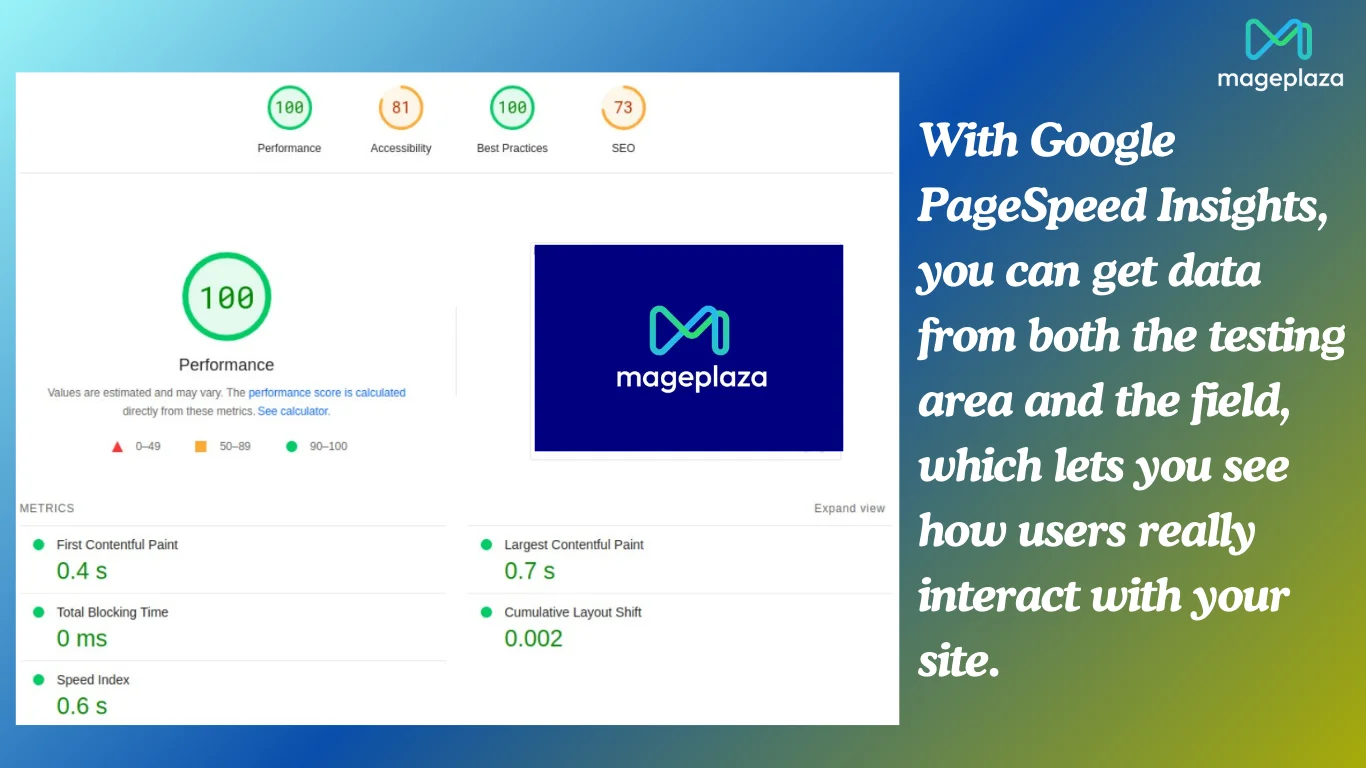
Pro Tip: To gain a well-rounded understanding of your server responsiveness, we recommend utilizing a combination of these methods and comparing results. When measuring, focus on core pages like the homepage, category and product pages, and the checkout funnel. Remember to temporarily disable server caching (block and full page) to obtain accurate, unadulterated data.
What Makes TTFB on Magento Run Slow Down?
In Magento, several factors contribute to a slow Time To First Byte (TTFB), affecting online store performance significantly. Common culprits include:
1. Unoptimized Code
Factors like excessive PHP logic, inefficient MySQL queries, and redundant code can significantly slow down your server’s processing time. Fortunately, GTM with GA4 extension for Magento 2 can solve this issue by managing multiple tracking code without affecting your store performance.
Without Google Tag Manager, whenever you want to track an event, a separate code snippet must be added to the site source code. As the number of events increases, so does the volume of code, leading to potential performance issues.
2. Web Server Configuration
A poorly configured web server or one lacking essential optimizations like Gzip compression can hinder data transfer rates. **Optimal server location is also crucial for minimizing latency and improving TTFB.
3. Lack of Backend Caching
Without backend caching mechanisms, Magento stores cannot pre-cache requests, code fragments, logs, or HTML files. This absence leads to longer response times as the server generates content dynamically for each request.
4. Database Optimization
Issues such as poorly configured queries, inadequate caching setups, or missing indexes in the database can drastically slow down data retrieval processes. Efficient database management practices are essential for maintaining fast TTFB.
Identifying and addressing these issues through Magento performance optimization strategies is crucial for improving TTFB and overall site speed, ensuring a smoother and faster user experience.
How to Find Problems That Slow Down TTFB?
To effectively pinpoint and address bottlenecks affecting Magento 2 server response time, it’s crucial to begin with a thorough audit. This involves using specialized profilers that analyze the execution time of various code segments.
There are two main categories of profilers that developers rely on:
-
Magento modules: You can install some extensions built for Magento 2 to examine queries. The advantage is that these modules are easy to use.
-
External tools: Such as XHProf and Xdebug Profiler, offer a more comprehensive analysis. Compared to Magento modules, these tools can reveal significantly more data—up to 1,000,000 calls with detailed stack traces. Although many of these calls may only take milliseconds, focusing on the ones that contribute to longer load times is essential for optimization efforts.
8 Core Steps to Cut Down on Magento 2 Server Response Time
Several subtasks make up TTFB tuning. Good news: most of the steps below are already part of Magento’s general speed improvement. Here are 8 steps you can follow to solve that problem:
1. Optimization for PHP and the Server Side
To enhance server response times on your Magento store, start by optimizing PHP code for faster execution. Identify and streamline slow PHP code sections to reduce processing time. Additionally, disable unnecessary debug modes within modules to prevent excessive logging, which can overload server resources. **Modules like Xdebug Profiler, even when inactive but enabled, can significantly slow down your website, necessitating careful management. Always **keep PHP updated to the latest version and configure it according to Magento’s recommended settings for optimal performance.
2. Management of Extensions and Modules
Upgrade to HTTP/2 protocol to replace HTTP/1, as it allows simultaneous handling of multiple requests, optimizing resource allocation and prioritization. Implement browser caching for static content such as fonts and images, storing them locally on users’ devices for extended periods. This minimizes server requests and accelerates content loading times. Additionally, enable Gzip compression to compress files before transmission, reducing data transfer times and enhancing overall site speed.
3. Get the newest version of Magento
To improve TTFB, it’s best to make sure Magento is always on the most recent version. Since June 2023, Magento 2 has done a lot to improve TTFB by adding new features, making security better, and writing more consistent code. By upgrading, you can make sure that your website runs faster and has better protection.
4. Pick a Hosting You Can Trust
Selecting the right hosting provider is pivotal for Magento 2 performance. A reliable hosting service ensures faster response times and scalability to accommodate growing traffic. Opt for a provider that offers robust server management and technical support, allowing you to concentrate on website development without worrying about server intricacies.
5. Using Magento Caching
Implementing caching is crucial for reducing your Magento site’s Time to First Byte (TTFB) and overall load times. Many web hosting providers offer built-in caching tools, so it’s wise to confirm their availability.
In Magento 2, you have options like Redis. Redis serves as a versatile caching tool suitable for various types of caching needs and excels in Full Page Caching (FPC) scenarios.
Combining Redis and Varnish cache is common practice, ensuring robust speed optimization even if one tool encounters issues.
6. Improvements To The Database
Effective database optimization significantly impacts a website’s response time. Initially, a new website’s database responds quickly to queries. However, as data accumulates over time, response times may slow down.
Regularly optimizing the database is essential to maintain swift server response times (TTFB). This proactive approach ensures that the database handles queries efficiently, regardless of its growing data volume. By focusing on Magento caching strategies and database optimization techniques, you can enhance your site’s performance and user experience seamlessly.
7. Using CDN and SSL/TLS To Enhance Your TTFB
Implementing a Content Delivery Network (CDN) and ensuring SSL/TLS encryption are crucial steps to enhance your Magento store’s Time To First Byte (TTFB).
A CDN works by distributing your website’s content across multiple servers globally, reducing the physical distance between users and your servers. This proximity minimizes latency and accelerates content delivery. Services like Cloudflare provide robust CDN solutions, optimizing how your content is cached and delivered to users.
SSL/TLS encryption ensures secure communication between your website and its visitors, safeguarding data integrity and user privacy. This encryption can slightly impact TTFB, but the security benefits outweigh the minimal performance trade-offs.
8. Other Techniques You Can Consider
Beyond CDN and SSL/TLS, several additional strategies can further improve your Magento store’s server response time:
-
MySQL optimization: Fine-tuning your database queries and configurations can significantly enhance database performance, thereby reducing TTFB.
-
PWA and mobile optimization: Implementing Progressive Web Apps (PWAs) and optimizing your website for mobile devices ensures faster loading times and a better user experience.
-
Image optimization: Compressing and resizing images without compromising quality reduces file sizes and accelerates page loading.
-
Avoid excessive logging: Minimize server-side logging to prevent unnecessary processing overhead that can slow down TTFB.
-
Implement lazy loading: Load content dynamically as users scroll, prioritizing visible content initially and reducing initial load times.
By implementing these techniques alongside CDN and SSL/TLS, you can effectively optimize your Magento store’s TTFB, improving overall site performance and user satisfaction.
More Suggestions for Making TTFB Better From Mageplaza
When it comes to enhancing the server response time (TTFB) of your Magento 2 store, there are several advanced strategies you can implement beyond the basics. These tips are designed to streamline your site’s performance and improve user experience:
1. For Better Performance, Check The Server’s Resources
Ensuring your server can handle the current and future traffic load is crucial. You have to consider upgrading your server’s RAM and CPU cores to meet the demands of your Magento store. If you’re experiencing high traffic, implementing load balancing between servers can distribute the workload effectively, reducing TTFB due to resource constraints. This step is essential as it directly impacts how quickly your server can process and respond to requests.
2. Make a Smart Hosting Choice Between SSD and HDD
The type of hosting you choose significantly influences TTFB. Solid-state drives (SSDs) offer faster data retrieval times compared to traditional hard disk drives (HDDs). Opting for SSD-based hosting can drastically reduce TTFB by accelerating data access, especially crucial for Magento’s database-intensive operations.
Additionally, ensure your hosting provider offers sufficient CPU cores—aim for a minimum of 4 cores—to support Magento’s processing needs effectively. Adequate RAM allocation is also critical; allocate at least 4 GB for smaller stores and consider scaling up to 16 or 32 GB for larger operations.
3. Utilize Lazy Loading To Boost Performance
Lazy loading isn’t just beneficial for images—it can optimize the loading of various content blocks throughout your Magento store. By deferring the loading of non-essential blocks until they are needed (such as when a user scrolls down), you can reduce the initial TTFB. This approach minimizes server workload during the initial page load, enhancing overall site speed and responsiveness.
4. Simplify Modules And Extensions
Magento’s flexibility comes from its extensive library of extensions. However, unused or inefficient modules can bog down your site’s performance. Conduct regular audits of your installed extensions and disable those that are unnecessary or outdated. Simplifying your site’s logic reduces processing overhead, leading to faster TTFB and improved site responsiveness.
5. Better Your Logging Methods

In production environments, excessive logging can impact TTFB by slowing down file system operations. Focus on logging critical errors and essential diagnostic information while minimizing non-essential logging. This practice maintains visibility into system health without compromising performance, ensuring your Magento store runs efficiently.
6. Update Your Magento regularly
Magento regularly releases updates that include performance optimizations, bug fixes, and security enhancements. **Upgrading to the latest version (currently Magento 2.4.7 as of April 09, 2025) ensures your store benefits from these improvements, including faster backend operations and better TTFB. **
Newer versions often leverage newer PHP versions and improve database handling, contributing to overall speed improvements.
7. Track And Improve The Performance Of Code
Conduct thorough code reviews to identify and optimize performance bottlenecks in your Magento modules. Immediately address any slow-performing code segments to improve overall site speed and TTFB. You should also regularly monitor code execution speed, allowing you to proactively maintain peak performance levels and respond swiftly to emerging issues.
2 Quick Magento Themes to Improve Your Core Web Needs
Optimizing your Magento store’s Time To First Byte (TTFB) is crucial for enhancing user experience and SEO rankings. Choosing the right Magento theme can significantly impact your Core Web Vitals metrics, ensuring faster loading times and better performance overall. Here are three top-rated themes designed to boost your site’s speed and meet the latest web standards:
1. Hyva Theme
The Hyva Theme stands out for its exceptional performance on Google PageSpeed, scoring a perfect 100/100. It’s tailored specifically for Magento, focusing on delivering optimal user experience without the complexity of a Progressive Web App (PWA). This makes it an ideal choice for improving both TTFB and Core Web Vitals metrics.
In fact, many third-party extension providers for Magento 2 are catching up with Hyva theme by updating their modules to be compatible with Hyva.
2. Argento Breeze Theme
Argento Breeze is renowned for its responsive design and robust performance optimizations. It boasts impressive metrics like a Google PageSpeed Insights score of 98 for mobile and minimal critical CSS and deferred CSS sizes, ensuring swift loading times and excellent Core Web Vitals performance.
Summing up Magento TTFB Optimization
It takes a lot of care and hard work to optimize Magento TTFB. No matter what, don’t let that stop you. In the first place, these optimization techniques improve not only server speed but also other indicators of performance. The second thing is that you can use Mageplaza’s programming team and our Magento improvement services.



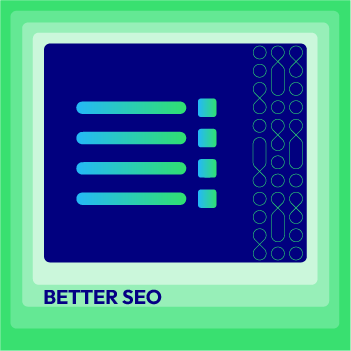



![Top 20+ Must-have Shopify Apps for 2025 [Free & Paid] - Mageplaza](https://cdn2.mageplaza.com/media/blog/must-have-shopify-apps/top-must-have-shopify-apps.png)
![[2025 Updates] Top 10+ Upsell Apps for Shopify - Mageplaza](https://cdn2.mageplaza.com/media/blog/best-upsell-shopify-app/cover.png)